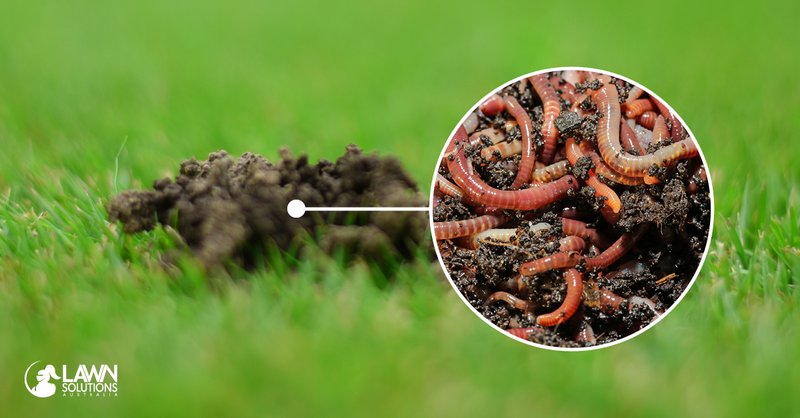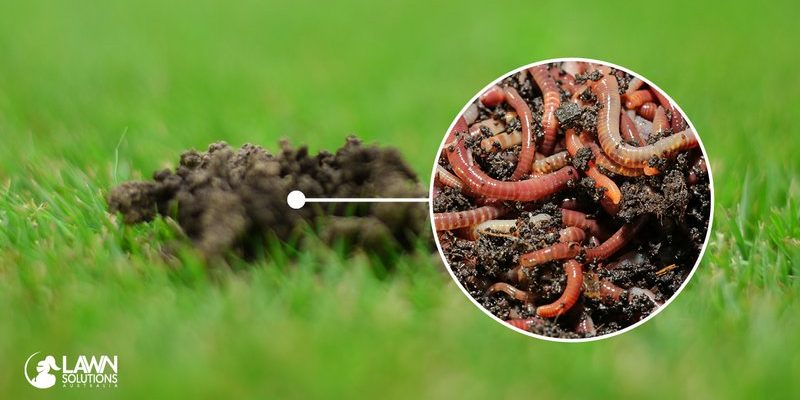
So, why are earthworms so important? And what’s all the fuss about them in lawn care? Honestly, it’s a blend of benefits and myths that swirl around these wriggly little guys. Let’s dig into the facts to help you understand how these creatures can turn your lawn into a green paradise and clear up some common misconceptions along the way.
Understanding the Role of Earthworms in Soil Health
Earthworms are nature’s way of recycling organic matter in the soil. They break down decaying leaves, grass clippings, and other organic debris into nutrient-rich castings, which are fantastic for your plants. When you think of soil health, imagine it as a living thing with its ecosystem. Earthworms enrich the soil, making it more fertile and capable of supporting healthy grass, plants, and flowers.
As they move through the soil, they create tunnels. These tunnels not only aerate the ground, allowing oxygen and water to reach plant roots, but they also promote drainage. If you’ve ever walked on a lawn after a heavy rain, you might notice how some areas retain water while others drain quickly. This drainage is partly thanks to the hardworking earthworms. Their presence means fewer puddles and a healthier lawn overall.
Additionally, earthworms help with soil structure. Over time, healthy soil leads to robust grass that’s less susceptible to pests and diseases. It’s as if earthworms are doing all the hard work while you sit back and enjoy a beautiful lawn!
Benefits of Earthworms in Lawn Care
Now that we’ve established how important earthworms are for soil health, let’s talk about the specific benefits they bring to your lawn:
- Nutrient Generation: Earthworm castings contain essential nutrients like nitrogen, phosphorus, and potassium. These nutrients are vital for plant growth, promoting greener grass.
- Soil Aeration: Their tunneling helps to break up compacted soil, making it easier for roots to grow deep and strong.
- Improved Water Retention: Earthworm activity helps soil retain moisture, meaning your lawn stays hydrated longer without frequent watering.
- Pest and Disease Resistance: A rich, diverse soil ecosystem supports healthy grass that can better fend off pests and diseases.
You might be wondering if you need to introduce earthworms to your lawn. The good news is that they often find their way naturally. However, if your soil is depleted or overly compacted, you could benefit from adding organic matter (like compost) to help attract these little helpers.
Common Myths About Earthworms
With every superhero comes a few myths, and earthworms are no exception. Let’s debunk some common misconceptions about these vital creatures.
Myth 1: All Earthworms Are the Same
While it might seem like all earthworms are created equal, that’s not the case. There are over 6,000 species of earthworms, and they vary in behavior and habitat preferences. Some thrive in sandy soils, while others prefer clay. Knowing the right type for your lawn can make a difference in how effectively they improve your soil.
Myth 2: Earthworms Are a Pest
Another misconception is that earthworms can be harmful to your lawn. In reality, they’re beneficial allies in the fight for a healthy landscape. The only time they might be seen as pests is if too many invade a small area, which is rare. Rather than seeing them as a nuisance, think of them as your lawn’s little maintenance crew.
How to Encourage Earthworms in Your Lawn
If you’re convinced that earthworms are the way to go, you might be wondering how to encourage them to thrive in your lawn. The good news is that it’s pretty simple!
- Avoid Chemical Pesticides: Harmful chemicals can kill earthworms and disrupt their activity. Try organic options for pest control.
- Add Organic Matter: Composting kitchen scraps and yard waste can create a welcoming environment for earthworms.
- Practice No-Dig Gardening: Tilling and turning soil can disrupt the delicate ecosystem earthworms depend on. A no-dig approach encourages their natural activities.
By following these steps, you’re basically rolling out the red carpet for earthworms. The more inviting your lawn is, the more likely they’ll make themselves at home.
Signs of Healthy Earthworm Populations
So, how do you know if your lawn is home to a thriving earthworm population? Here are some signs to look for:
– **Earthworm Castings:** These small, dark pellets are a sure sign of active earthworm presence. If you see them scattered across your lawn or garden, it’s a good indication that your soil is healthy.
– **Loose Soil:** If you can easily dig into your soil and it feels crumbly instead of compact, that’s a great sign that earthworms are doing their job.
– **Healthy Plant Growth:** Vibrant, green grass is often a reflection of good soil health. If your lawn is thriving, it might just be thanks to those little squirmy helpers underground.
Final Thoughts on Earthworms and Lawn Care
Incorporating earthworms into your lawn care routine isn’t just beneficial; it’s essential. They contribute to a richer, healthier soil ecosystem, which ultimately leads to a gorgeous green lawn. While some myths exist around these creatures, the facts support their value in lawn health.
If you’re focusing on creating a beautiful outdoor space, consider nurturing your earthworm population as part of your lawn care strategy. By providing a welcoming environment for these hardworking worms, you’re investing in a lush, resilient lawn that you can enjoy for years to come. So, next time you spot one of these little guys wriggling in your soil, give them a nod of appreciation. They’ve got your lawn’s back!

